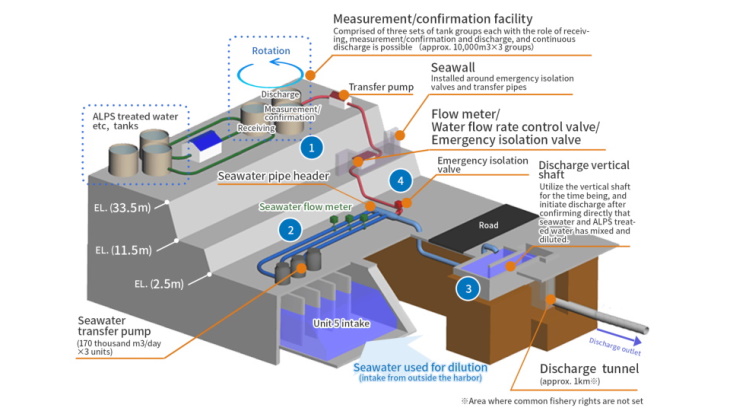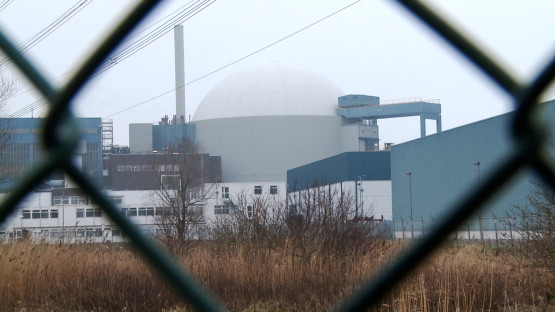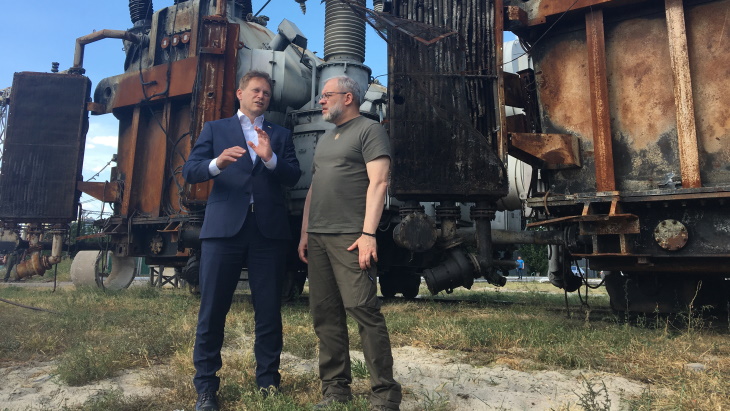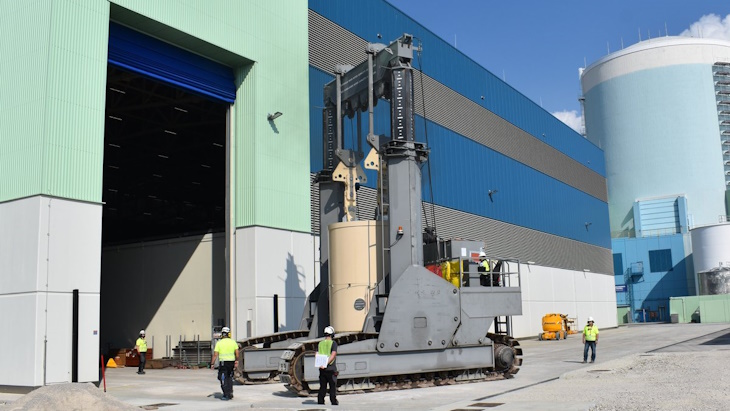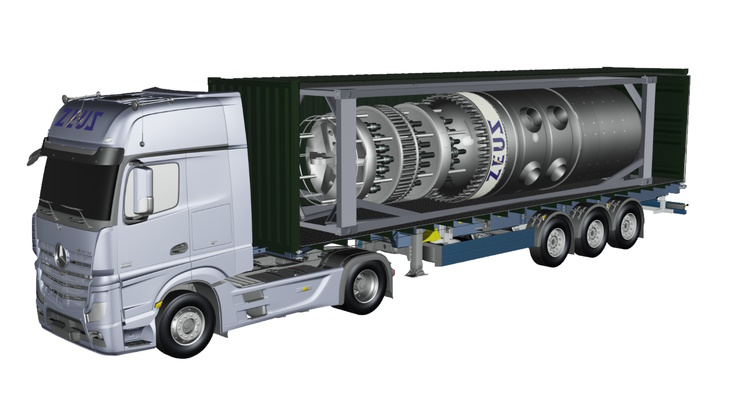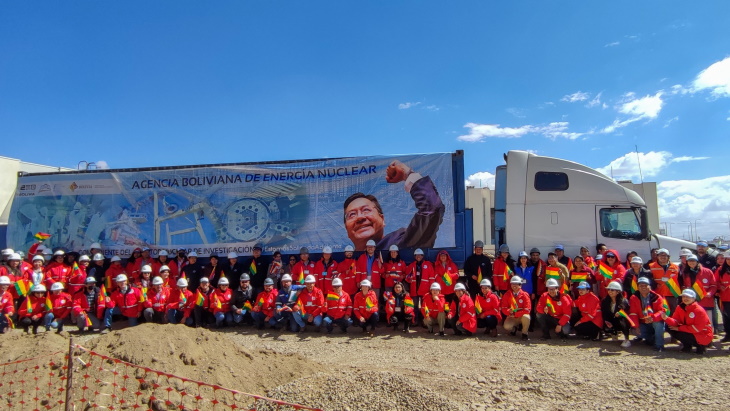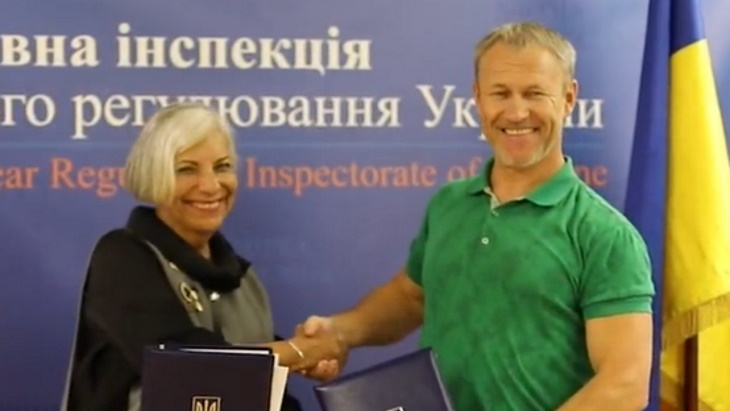Source: https://www.afr.com/companies/energy/britain-fires-starter-s-gun-on-race-to-nuclear-20230726-p5dr9r
London | The British government is ready to trowel more than £20 billion (AUS$38 billion) of taxpayers’ money into turbocharging the country’s nuclear industry, as the daunting task of decarbonising the UK’s energy sector looms ever larger.
With offshore wind and solar unlikely to ensure Britain has uninterrupted baseload power, the official goal is to get 24 gigawatts of nuclear energy onstream by 2050 – up to a quarter of British power demand, up from 15 per cent now.
But hefty new gigawatt-scale nuclear power stations are struggling to get off the ground, so the government’s hopes are increasingly pinned on an early lift-off for small modular reactors (SMRs).
“The energy issue we’ve had in Europe in these past two years has been a bit of a reality check. Before that, we had a combination of wishful thinking and wilful ignorance about how we are going to decarbonise,” says Tom Greatrex, chief executive of Britain’s Nuclear Industry Association.
He says that although successive Downing Street administrations have all understood Britain’s flagging nuclear industry needs fresh legs, Prime Minister Rishi Sunak’s government is now gripped with urgency. And it has clocked the key catalysing role of taxpayers and public policy.
“The lesson from anywhere in the world where nuclear power has been deployed is that unless the state is actively involved in encouraging it to happen, it doesn’t happen,” Greatrex says.
“It is public policy that has driven it, basically because the infrastructure is so big and capital-intensive.”
The government recently unfurled a £170 million investment into hurrying up work on the embryonic but enormous Sizewell C, a 3.2-gigawatt nuclear reactor to be built by the mid-2030s. This came on top of £700 million in earlier subsidies.
But the real action must of necessity be elsewhere. Construction of the next big new nuclear reactor, the 3.2-gigawatt Hinkley Point C plant in Somerset, has been subject to seemingly endless delays and cost blowouts. And of the five creaky old mega-reactors now operating, all but one will be shut in the next five years.
So, the focus is squarely on SMRs, which in theory can be rolled out more cheaply and snappily; and also on advanced modular reactors (AMRs), which use exotic new tech or methods that are still either largely on the drawing board or even just a glint in some scientist’s eye.
A week before the Sizewell announcement, the government confirmed it would set up a new agency, revelling in the Tory-boilerplate name of Great British Nuclear, to gee up the industry.
There would be up to £20 billion in subsidies, if needed, to get between five and eight SMRs up and running by early next decade, and about £160 million in grants to keep R&D ticking over into AMRs and nuclear fuels.
“I look forward to seeing the world-class designs submitted from all around the world through the competitive selection process, as the UK takes its place front and centre in the global race to unleash a new generation of nuclear technology,” energy minister Andrew Bowie trumpeted.
Leaders of the pack
At the front of the SMR pack is Rolls-Royce, leading a consortium that has already received £210 million in government grants. It has beefed up its SMR workforce to about 600 people.
Its reactor, based on the pressurised water reactor (PWR) in Britain’s nuclear submarines, is already being evaluated by the safety regulator, the Office for Nuclear Regulation.
Alastair Evans, director of corporate affairs at Rolls-Royce SMR, reckons its design is “at least 18 months ahead of any competitor in the UK”.
“Rolls-Royce has been a nuclear reactor plant designer since the start of the UK nuclear submarine program in the 1950s,” he says. The PWR design “has been used in over 200 reactors around the world … using proven and commercially available technology to deliver a fully integrated, factory-built nuclear power plant.”
GE Hitachi is Rolls-Royce’s main rival. Media reports say it already has a BWRX-300 under construction and regulatory review in Canada, and its model is under consideration in the US. The company claims to be the only contender with a realistic shot of getting an SMR operational by 2030.
The two are very likely to feature on Great British Nuclear’s short-list, which will be compiled by the end of the year. Other contenders could include Nuscale and Westinghouse.
The lucky winners will get access to the government’s subsidy scheme, which could be worth £20 billion if that’s what it takes.
It’s unclear exactly what form this largesse will assume. It could use the “regulated asset base” model, where investors are given a guaranteed minimum return, funded by a levy on consumer energy bills.
Another model might involve “strike prices”: a guaranteed price per unit, to smooth out the risks and uncertainty involved in committing so much capital upfront.
Whatever the capital cost, it won’t be as much as required for a mega-reactor: perhaps £2 billion to get an SMR up and running, as opposed to the £20 billion-plus for Sizewell C, thanks to the SMR’s modular, factory-based construction method. The catch, of course, is that you get just 50 to 500 megawatts of energy, rather than 3.2 gigawatts.
“It’s the economics of volume versus the economics of scale,” Greatrex says.
The initial batch of SMRs will almost certainly be built on the site of decommissioned larger reactors: communities there are socialised to nuclear; there are good grid connections; and the geography favours PWRs. This could help overcome a raft of potential political, planning or permit obstacles.
Dark horses
While the SMRs bolt towards an early-2030s target, the government hopes to back other horses in slower time. The AMRs might use technologies that ultimately prove more efficient, such as MoltexFlex’s molten-salt reactor. Or they might have different applications, such as local start-up U-Battery.
U-Battery was developing a gas-cooled micro-modular reactor (MMR) that could fit into a shed on land barely larger than a tennis court. Rather than feeding the grid, it could provide stand-alone heat and power to a single business or operation – a steelmaker, a hydrogen producer, a mine, a data centre – or to a remote township.
Its key backer, Urenco, ultimately couldn’t pull in investors, and in March handed the intellectual property to the government-backed National Nuclear Laboratory.
Other AMRs have higher-profile investors: TerraPower has Bill Gates; NewCleo has Italy’s Agnelli family. Most are working across multiple markets. X-Energy, for example, is using US funding to build a pilot of its gas-cooled pebble-bed reactor in Texas, which it says would allow it to roll out quickly in Britain.
“We’d probably benefit from two or three technologies,” Paul Norman, director of the Birmingham Centre for Nuclear Education and Research, told The Times recently. “You don’t want too many different designs, but you probably also want a bit of diversity and competition between vendors.”
The government has fired the starter’s gun, and the race in Britain is on. There’s bipartisan political support and investor interest, so Greatrex’s only anxiety is that Westminster might become distracted.
“It’s about maintaining momentum and focus. When something is at the top of the agenda it gets that attention and focus,” he says. “But if that focus is lost, that drive and commitment is lost? Then things could go back to taking a very long time.”


